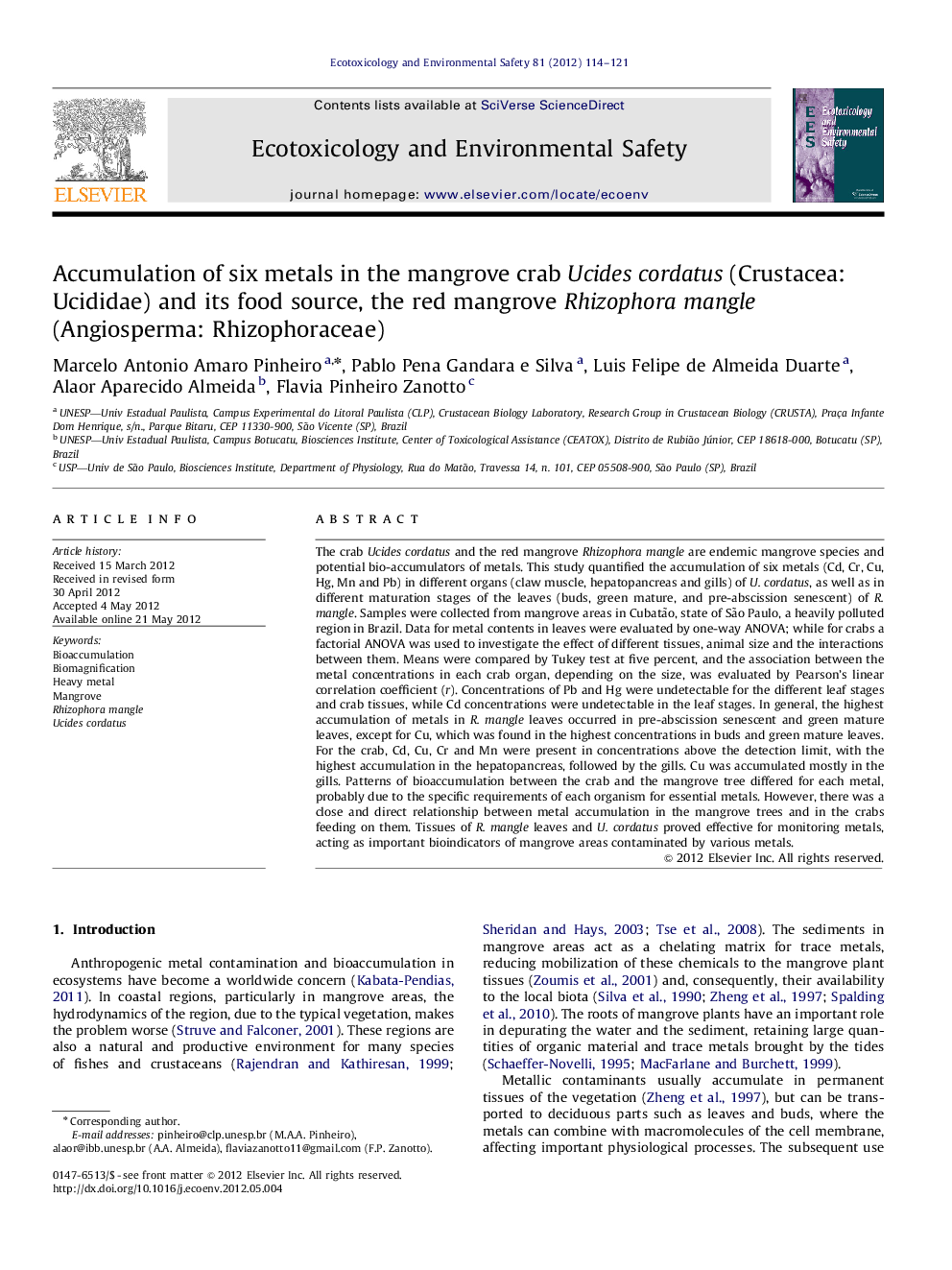| کد مقاله | کد نشریه | سال انتشار | مقاله انگلیسی | نسخه تمام متن |
|---|---|---|---|---|
| 4420648 | 1618982 | 2012 | 8 صفحه PDF | دانلود رایگان |

The crab Ucides cordatus and the red mangrove Rhizophora mangle are endemic mangrove species and potential bio-accumulators of metals. This study quantified the accumulation of six metals (Cd, Cr, Cu, Hg, Mn and Pb) in different organs (claw muscle, hepatopancreas and gills) of U. cordatus, as well as in different maturation stages of the leaves (buds, green mature, and pre-abscission senescent) of R. mangle. Samples were collected from mangrove areas in Cubatão, state of São Paulo, a heavily polluted region in Brazil. Data for metal contents in leaves were evaluated by one-way ANOVA; while for crabs a factorial ANOVA was used to investigate the effect of different tissues, animal size and the interactions between them. Means were compared by Tukey test at five percent, and the association between the metal concentrations in each crab organ, depending on the size, was evaluated by Pearson's linear correlation coefficient (r). Concentrations of Pb and Hg were undetectable for the different leaf stages and crab tissues, while Cd concentrations were undetectable in the leaf stages. In general, the highest accumulation of metals in R. mangle leaves occurred in pre-abscission senescent and green mature leaves, except for Cu, which was found in the highest concentrations in buds and green mature leaves. For the crab, Cd, Cu, Cr and Mn were present in concentrations above the detection limit, with the highest accumulation in the hepatopancreas, followed by the gills. Cu was accumulated mostly in the gills. Patterns of bioaccumulation between the crab and the mangrove tree differed for each metal, probably due to the specific requirements of each organism for essential metals. However, there was a close and direct relationship between metal accumulation in the mangrove trees and in the crabs feeding on them. Tissues of R. mangle leaves and U. cordatus proved effective for monitoring metals, acting as important bioindicators of mangrove areas contaminated by various metals.
► Ucides cordatus and Rhizophora mangle are useful as bioindicators for metal pollution.
► Higher values of Cu and Mn were detected in bud and mature leaves, respectively.
► The concentration of metals in the crabs' tissues did not vary with their size.
► Metals accumulated more in crabs' hepatopancreas, except for Cu (gills).
► Cr and Mn values in the crabs were above what is considered safe for human health.
Journal: Ecotoxicology and Environmental Safety - Volume 81, 1 July 2012, Pages 114–121